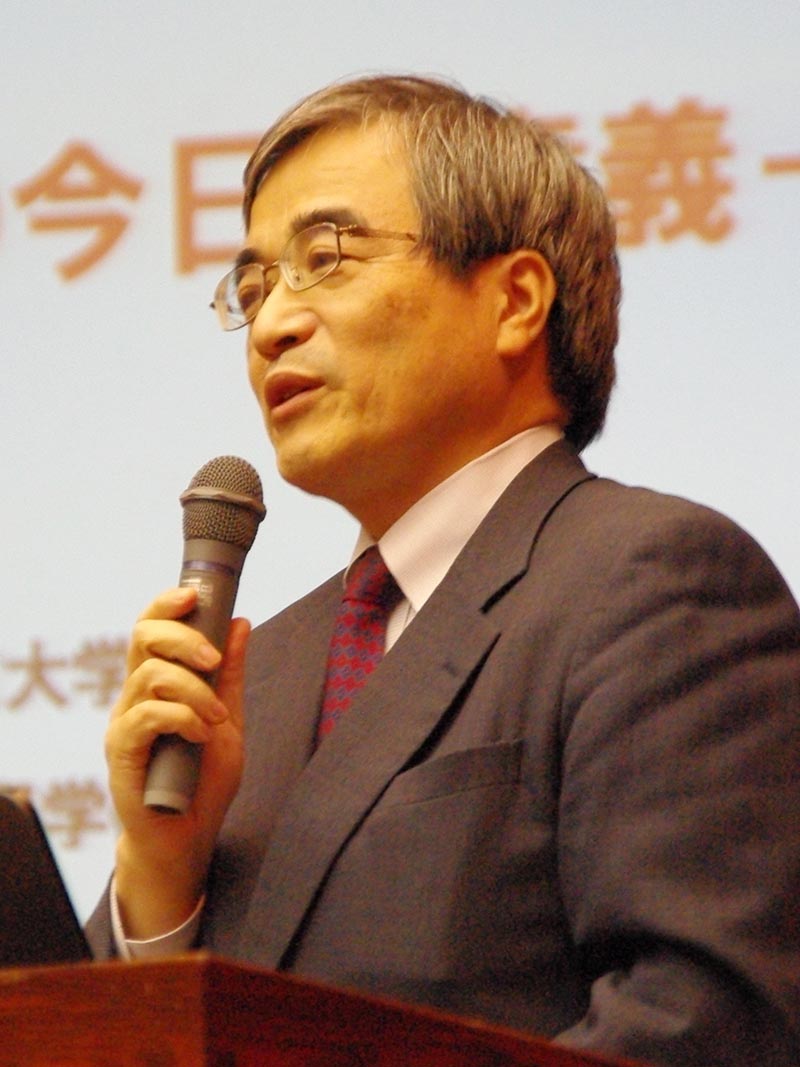JICA-RI Co-Hosts a Public Seminar on the World Bank's Agricultural Land Development Projects in Post-war Japan
2013.12.18
Japan is currently the second largest funder to the World Bank (WB) next to the United States, whereas it had been the largest recipient state of loans from the World Bank until the 1970s. Due to the domestic demand for food, Japan had to increase the agricultural production in the 1950s. A WB loan of US$ 4.3 million in total was provided for reclamation projects in Hokkaido and Aomori Prefecture through the Agriculture Land Development Machinery Public Corporation.
To review the effect of the WB-funded farm land development projects on the agriculture sector of Japan and to consider how the Japanese experience contributed to subsequent Japanese international cooperation, a seminar entitled “Agricultural Land Development Projects in Post-war Japan Implemented by the World Bank: Its Significance for the Present” was held at JICA Ichigaya on December 11.

Director Kato
In his opening remarks, JICA-RI Director Hiroshi Kato (JICA Vice President) stated that this seminar will give a good opportunity to review a history of Japanese international cooperation and to think of its future.
Three scholars who followed Kato’s opening remarks gave speeches and introduced case studies respectively. First, Professor Mikiyasu Nakayama of the Graduate School of the University of Tokyo gave a presentation titled “The World Bank’s Aid to Japan,” where he introduced that the WB loans had contributed to the development of important infrastructure and key industries that boosted Japan’s economic growth after the war. He also stated that with the lessons learned from the World Bank’s aid to Japan—aid provides not only technology transfer but change in the process of doing things,—Japan can give invaluable advices based on its experience as an aid recipient nation to developing countries in a midst of an economic growth.
Secondly, Professor Ryo Fujikura of Hosei University explained histories of three subprojects: the Konsen Pilot Farm in Hokkaido; the Kamikita Pilot Farm in Aomori Prefecture; and the Shinotsu Peatland Reclamation Project in Hokkaido along with the situation before and after settlement of the land.
Lastly, Professor Emeritus Yasuharu Umeda of Hokkaido University reported on the case of the Shinotsu peatland that WB sponsored. He introduced that the commitment of Japanese engineers and agricultural experts to rice cultivation led to the successful conversion of the peatlands into paddy fields despite WB’ plan of introduction of dairy farming at the beginning. He concluded that the advanced technical skills of the Japanese agricultural civil engineering and the flexible response of WB made this conversion possible.
Subsequently Professor Fujikura moderated a panel discussion with Mr. Haruki Aono and Mr. Hidesuke Okuyama, who were settlers on a pilot farm in Hokkaido, Professor Emeritus Umeda, and Director Kato.
Mr. Aono settled on the Konsen Pilot Farm in 1957, while Mr. Okuyama did in 1958. After the two settlers introduced their respective painstaking experiences in mixed farming and dairy farming under severe circumstances, Professor Umeda pointed out the strong will of the settlers who were involved in reclamation with Japanese skills. In light of the presentations, Kato stressed that it is important for aid agencies to take account of the situation of fields and listen to voices of people in any recipient nations.
This seminar was a good opportunity for the participants to learn diverse lessons for the direction of Japanese aid, by listening to voices of the Japanese who were directly involved in development assistance projects in times when Japan was an aid recipient.

(from the left)、Prof. Fijikura, Prf.Emeritus Umeda, Mr.Aono, Mr.Okuyama、Director Kato

事業事前評価表(地球規模課題対応国際科学技術協力(SATREPS)).国際協力機構 地球環境部 . 防災第一チーム. 1.案件名.国 名: フィリピン共和国.

事業事前評価表(地球規模課題対応国際科学技術協力(SATREPS)).国際協力機構 地球環境部 . 防災第一チーム. 1.案件名.国 名: フィリピン共和国.

事業事前評価表(地球規模課題対応国際科学技術協力(SATREPS)).国際協力機構 地球環境部 . 防災第一チーム. 1.案件名.国 名: フィリピン共和国.

事業事前評価表(地球規模課題対応国際科学技術協力(SATREPS)).国際協力機構 地球環境部 . 防災第一チーム. 1.案件名.国 名: フィリピン共和国.

事業事前評価表(地球規模課題対応国際科学技術協力(SATREPS)).国際協力機構 地球環境部 . 防災第一チーム. 1.案件名.国 名: フィリピン共和国.
scroll